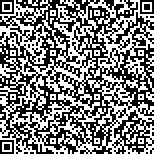下载中心
优秀审稿专家
优秀论文
相关链接
摘要

利用2003年5-10月在环青海湖地区获取的典型天然草地与人工草地多时相地面高分辨率光谱数据,首先分析了最大似然分类法、支持向量机分类法、光谱角分类法、最小距离分类法和人工神经网络分类法所对应的最佳光谱变换方案;通过16个时相光谱数据的分类对比实验,分别确定了天然草地与人工草地分类、人工草地分类、天然草地分类的最佳时相;最后利用TM遥感数据对地面光谱数据分析结果进行了补充验证。
Grassland shows obvious seasonal patterns and the effect of grassland classification varies in different stage within its life span.Field spectrum data with high resolution of dominant grasslands in the region around Qinghai lake was collected at 16 temporals in 2003 using GER 1500 spectrometer.Analysis of spectrum classification experiments for grasslands shows that spectrum transformation affects the classification accuracy.Classification method combining with certain spectrum transformation can achieve much better result than using the raw spectrum reflectance.Maximum likelihood and support vector machine using moving average spectrum,spectral angle mapping and minimum distance using first-order derivative of spectrum's logarithm,and artificial neural network using first-order derivative of normalized spectrum can improve classification result.Then the paper carries out classification experiments for each temporal and determines the optimal temporal for grassland spectrum classification.The optimal temporal for natural and artificial grassland classification is at the beginning of grass turning green or in the middle ten days of August,with highest recognition accuracy mounting to 99%.The optimal temporal for artificial grassland classification is in the middle ten days of May,with highest recognition accuracy mounting to 95%,and it is worst for artificial grassland classification in the middle ten days of July.The optimal temporal for natural grassland classification is in the middle ten days of August,with highest recognition accuracy mounting to 87%.Experiment using TM data testifies the result derived from field spectrum data.

